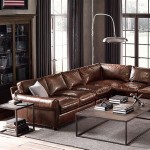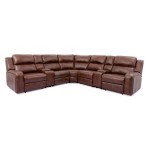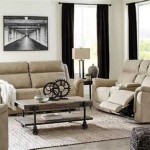Formal Living Room No Sofa: A Guide to Creating an Elegant and Inviting Space
A formal living room without a sofa may seem like an unconventional concept, but it can create a striking and inviting space that sets the tone for the rest of your home. This guide will provide you with the essential steps to design a formal living room without a sofa, ensuring it remains both elegant and welcoming.
1. Choose Statement Seating
Instead of a traditional sofa, opt for statement seating pieces that serve as focal points of the room. Consider grand armchairs with intricate carvings or bold upholstery. A chaise lounge can also add a sense of luxury and relaxation. Arrange the seating around a central point, such as a coffee table or fireplace.
2. Incorporate Accent Furniture
To complete the seating arrangement, add accent furniture such as ottomans, poufs, and side tables. These pieces provide additional seating options for guests and can also be used to showcase decorative objects or plants. Choose pieces that complement the style and color scheme of the statement seating.
3. Layer Rugs for Depth and Texture
Rugs add warmth, depth, and texture to a formal living room. Begin with a neutral base rug to ground the space and then layer on smaller accent rugs with patterns or textures. Overlapping or layering rugs creates a sense of visual interest and defines different areas within the room.
4. Elevate with Artwork
Artwork is a powerful way to transform a formal living room into a gallery-like space. Choose pieces that complement the overall design and evoke a sense of elegance. Large-scale paintings, sculptures, or tapestries can make a bold statement and become conversation starters.
5. Enhance with Lighting
Lighting is crucial in creating the desired ambiance in a formal living room. A combination of ambient, task, and accent lighting will illuminate the space while highlighting architectural features or artwork. Use chandeliers, floor lamps, and table lamps to create a layered and inviting lighting scheme.
6. Pay Attention to Details
No formal living room is complete without attention to details. Consider adding crown molding, decorative plasterwork, or wainscoting to elevate the walls. Rich fabrics, such as velvet or silk, can add a touch of luxury to curtains, cushions, and throw pillows. Mirrors can also create a sense of spaciousness and reflect light throughout the room.
7. Keep it Clutter-Free
A formal living room should exude a sense of order and tranquility. Avoid cluttering the space with unnecessary furniture or accessories. Instead, opt for a minimalist approach with well-chosen pieces that contribute to the overall design. Regular cleaning and maintenance will ensure the room remains pristine and welcoming.
Conclusion
Designing a formal living room without a sofa requires careful planning and attention to detail. By incorporating statement seating, layering rugs, elevating with artwork, enhancing with lighting, paying attention to details, and keeping it clutter-free, you can create a space that exudes elegance and invites relaxation. Embrace the unconventional and allow your formal living room to become a showcase of your refined taste and appreciation for a well-crafted interior.

9 Seating Alternatives For A No Sofa Living Room Houzz

How To Design A Living Room Without Sofa

Could Your Living Room Be Better Without A Sofa

How To Design A Living Room Without Sofa

10 Unique Ways To Setup Living Room Without Sofa

Houseography Tour Our House Living Room Without Sofa Couches Formal Rooms

10 Best Alternative Formal Living Room Ideas For Your Home Foyr

Formal Not So Living Room Design Mercedes Amato Interiors
:strip_icc()/Designer_KatieHackworthPhotographer_BelatheePhotography2-84746b53c1ab4abe92d5fcd198affbfe.jpg?strip=all)
How To Design A Formal Living Room That Doesn T Feel Dated

10 Tips For Styling Large Living Rooms Other Awkward Spaces The Inspired Room
Related Posts








